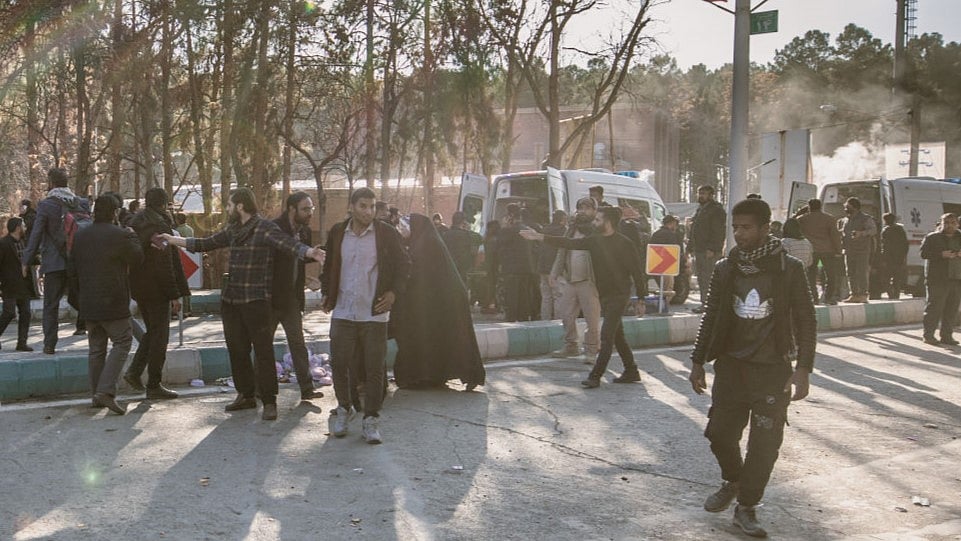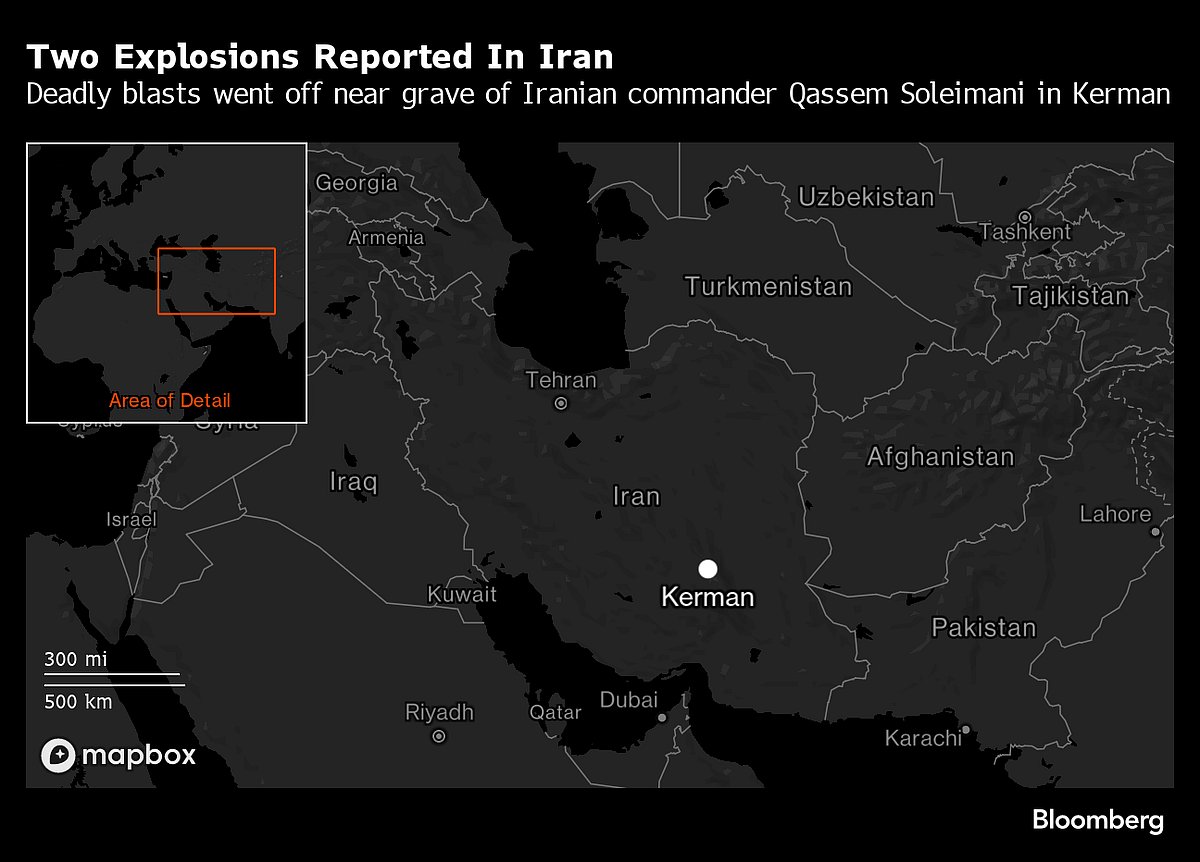Deadly Iran Blasts And US Warnings Escalate Mideast Tensions
Iran said blasts that killed almost 100 people in a central province were aimed at punishing its stance against Israel’s invasion of Gaza, building on signs the war against Hamas could tip into a broader regional conflict.

(Bloomberg) -- Iran said blasts that killed almost 100 people in a central province were aimed at punishing its stance against Israel’s invasion of Gaza, building on signs the war against Hamas could tip into a broader regional conflict.
No group immediately claimed responsibility for the twin explosions in Kerman on Wednesday, which detonated in a crowd marking the anniversary of the death of Qassem Soleimani, one of Iran’s most powerful generals killed by the US in a 2020 drone strike. Tehran said more than 200 were wounded.

Read more: Iran Blasts That Killed Nearly 100 Add to Mideast Tensions
Separately, more than a dozen countries warned the Iran-backed Houthi group in Yemen against continuing their attacks on shipping in the Red Sea, which have disrupted global commerce and triggered a build up of Western naval power in the area.
Groups backed by Iran have escalated attacks across Iraq, Syria, Lebanon and Yemen, since Israel struck back against Hamas, the Gaza-based group designated as a terrorist organization by the US and European Union. Hamas infiltrated Israel on Oct. 7, killed some 1,200 people and kidnapped another 240. More than 100 hostages remain in Gaza.

People familiar with the matter have said the US and its allies are considering possible military strikes against the Houthis in Yemen, in a recognition that a maritime task force launched by Washington may not be enough to eliminate the threat to the vital waterway that normally handles about 12% of the world’s commerce.
Read more: US, Partners Warn Houthis Against Further Attacks in Red Sea
While risks of a wider war have spiked this week, direct US-Iran confrontation is still seen as less likely, with most analysts predicting instead a growing number of tit-for-tat proxy attacks. However the risk remains that a smaller incident could suddenly spill into something larger with a growing military buildup in the region.
The sea attacks and war on Hamas will be top of the agenda when US Secretary of State Antony Blinken heads to the Middle East this week.
The strike near Soleimani’s grave was especially sensitive because his assassination in 2020 also led to fears of a direct military confrontation between Iran and the US, and in the aftermath Tehran mistakenly shot down a passenger plane and continues to vow to avenge his death.
Although Iran cited its opposition to Israel as the motive for the graveyard attack, Washington said it had no reason to believe Israel was involved and said any suggestion of the US taking part was “ridiculous.” The initial US supposition was that Islamic State or a related militant group was responsible, according to two people familiar with the US government’s analysis. Israel’s foreign ministry said it had no comment on the blasts.
Wednesday’s strike came less than 24 hours after an explosion blamed on Israel killed a senior Hamas leader in Lebanon’s capital Beirut, in another potential flashpoint for regional spillover. Iran-backed Hezbollah has launched attacks against Israel from its bases in Lebanon since the war began.
Last week, Iran accused Israel of killing another senior IRGC officer — and Soleimani’s former colleague — Seyyed Razi Mousavi, in Syria.
--With assistance from Courtney McBride.
More stories like this are available on bloomberg.com
©2024 Bloomberg L.P.